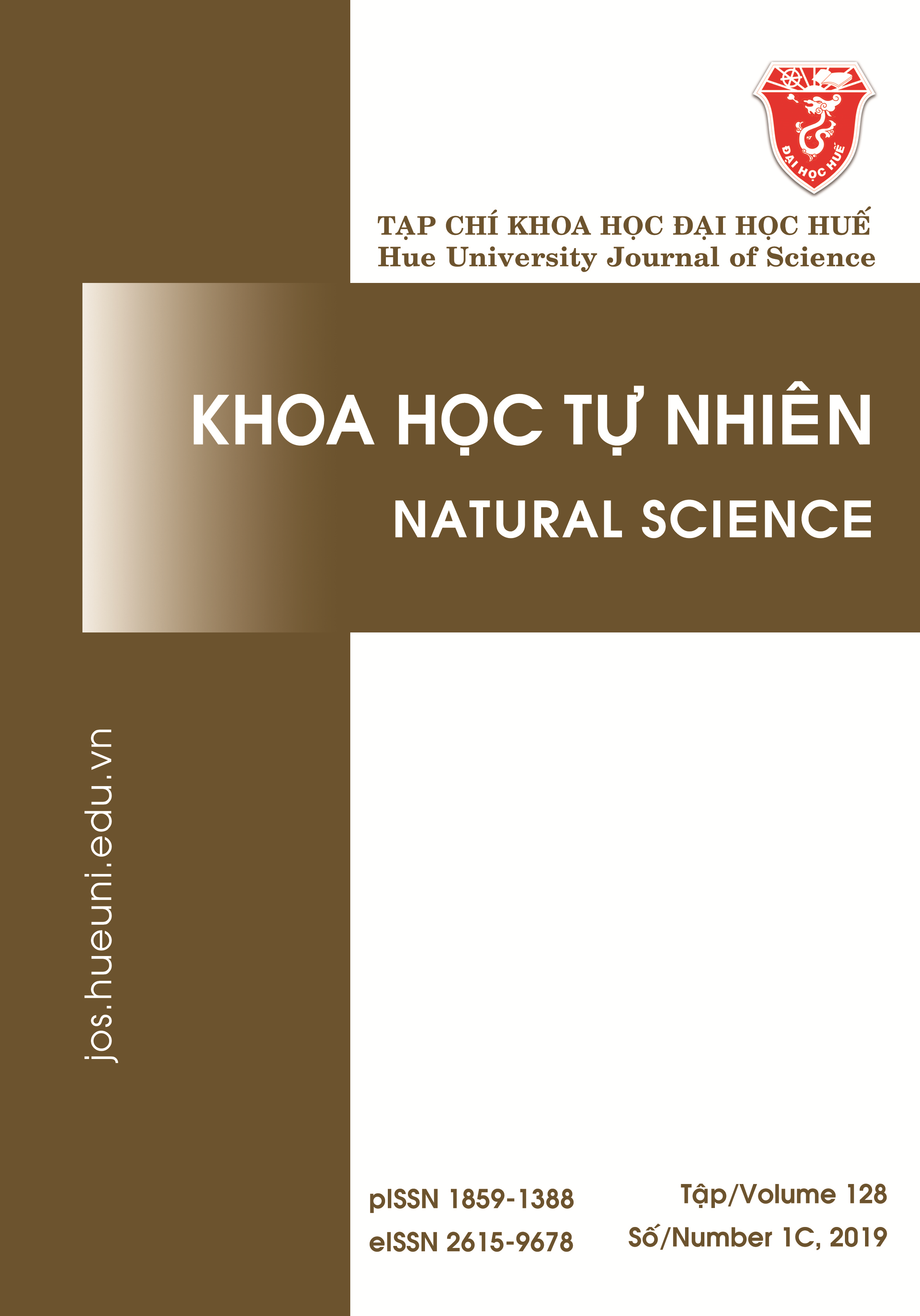Tóm tắt
Độ ổn định phân tán vật liệu graphen trong chất lỏng đóng vai trò rất quan trọng để nâng cao hiệu quả ứng dụng trong nhiều lĩnh vực, như trong chất lỏng nano, vật liệu tổ hợp, lĩnh vực y sinh, v.v. Do kích thước của vật liệu graphen ảnh hưởng lớn đến sự phân tán và độ ổn định của graphene, nên chúng tôi hướng đến cách tiếp cận rất mới là sử dụng phương pháp nghiền bi năng lượng cao nhằm giảm kích thước và tăng diện tích bề mặt riêng cho vật liệu graphen đa lớp (GNPs). Các phép đo bề mặt (FE-SEM), quang phổ Raman, phổ hấp thụ hồng ngoại FTIR, phép đo diện tích bề mặt riêng (BET) được sử dụng để đánh giá các đặc tính vật liệu, khả năng phân tán và độ ổn định phân tán trong chất lỏng của vật liệu GNPs sau khi nghiền. Kết quả cho thấy nghiền bi năng lượng cao là phương pháp rất hiệu quả để nâng cao khả năng phân tán và độ ổn định của vật liệu GNPs trong chất lỏng. Vật liệu GNPs được nghiền trong 5 giờ có kích thước bề mặt 218 nm; diện tích bề mặt là 196,63 m2/g, tăng 555% so với vật liệu graphen ban đầu; độ ổn định phân tán tốt nhất với thế zeta đo được là 29,2 mV.
Tài liệu tham khảo
- Novoselov KS, Geim AK, Morozov SV, Jiang D, Katsnelson MI, Grigorieva IV, Dubonos SV, Firsov AA. Two-dimensional gas of massless Dirac fermions in graphene. Nature. 2005;438(7065):197-200.
- Castro Neto AH, Guinea F, Peres NMR, Novoselov KS, Geim AK. The electronic properties of graphene. Reviews of Modern Physics. 2009;81(1):109-162.
- Lee C, Wei X, Kysar JW, Hone J. Measurement of the Elastic Properties and Intrinsic Strength of Monolayer Graphene. Science. 2008;321(5887):385-388.
- Ovid'Ko IA. Mechanical properties of graphene. Rev. Adv. Mater. Sci. 2013;34:1-11.
- Dai JF, Wang GJ, Ma L, Wu C K. Surface properties of graphene: Relationship to graphene-polymer composites. Rev. Adv. Mater. Sci. 2015;40 60-71.
- Kavitha MK, Jaiswal M. Graphene: A review of optical properties and photonic applications. Asian Journal of Physics. 2016;7:809-831
- Vashist SK, Venkatesh AG. Advances in Graphene-Based Sensors and Devices. Journal of Nanomedicine & Nanotechnology. 2013;04(01).
- Pop E, Varshney V, Roy AK. Thermal properties of graphene: Fundamentals and applications. MRS Bulletin. 2012;37(12):1273-1281.
- Van Trinh P, Anh NN, Hong NT, Hong PN, Minh PN, Thang BH. Experimental study on the thermal conductivity of ethylene glycol-based nanofluid containing Gr-CNT hybrid material. Journal of Molecular Liquids. 2018;269:344-353.
- Xu Z, Gao C. Graphene fiber: a new trend in carbon fibers. Materials Today. 2015;18(9):480-492.
- An Z, Compton OC, Putz KW, Brinson LC, Nguyen ST. Bio-Inspired Borate Cross-Linking in Ultra-Stiff Graphene Oxide Thin Films. Advanced Materials. 2011;23(33):3842-3846
- Da S, Wang J, Geng H, Jia S, Xu C, Li L, Shi P, Li G. High adhesion transparent conducting films using graphene oxide hybrid carbon nanotubes. Applied Surface Science. 2017;392:1117-1125.
- Saboori A, Dadkhah M, Fino P, Pavese M. An Over-view of Metal Matrix Nanocomposites Reinforced with Graphene Nanoplatelets; Mechanical, Electri-cal and Thermophysical Properties. Metals. 2018;8(6):423.
- Sajibul AB, Nizam U, Ferdaushi AB, Maksudul I, Sayed SH. A Review of Functionalized Graphene properties and its application. International Journal of Innovation and Scientific Research. 2015;17(2):303-315.
- Kuila T, Bose S, Hong CE, Uddin ME, Khanra P, Kim NH, Lee JH. Preparation of functionalized graphene/linear low density polyethylene composites by a solution mixing method. Carbon. 2011;49(3):1033-1037.
- Reina A, Jia X, Ho J, Nezich D, Son H, Bulovic V, Dresselhaus MS, Kong J. Large Area, Few-Layer Graphene Films on Arbitrary Substrates by Chemical Vapor Deposition. Nano Letters. 2009;9(1):30-35.
- Nguyen VT, Le HD, Nguyen VC, Tam Ngo TT, Le DQ, Nguyen XN, et al. Synthesis of multi-layer gra-phene films on copper tape by atmospheric pressure chemical vapor deposition method. Advances in Natural Sciences: Nanoscience and Nanotechno-logy. 2013;4(3):035012.
- Dong X, Wang P, Fang W, Su C, Chen Y, Li L, Huang W, Chen P. Growth of large-sized graphene thin-films by liquid precursor-based chemical vapor deposition under atmospheric pressure. Carbon. 2011;49(11):3672-3678.
- Frank O, Mohr M, Maultzsch J, Thomsen C, Riaz I, Jalil R, Novoselov KS, Tsoukleri G, Parthenios J, Papagelis K, Kavan L, Galiotis C. Raman 2D-Band Splitting in Graphene: Theory and Experiment. ACS Nano. 2011;5(3):2231-2239.
- Si C, Sun Z, Liu F. Strain engineering of graphene: a review. Nanoscale. 2016;8(6):3207-3217.
- Zhang J, Zou H, Qing Q, Yang Y, Li Q, Liu Z, Guo X, Du Z. Effect of Chemical Oxidation on the Structure of Single-Walled Carbon Nanotubes. The Journal of Physical Chemistry B. 2003;107(16):3712-3718.
- Jang J, Bae J, Yoon S. A study on the effect of surface treatment of carbon nanotubes for liquid crystalline epoxide–carbon nanotube composites. Journal of Materials Chemistry. 2003;13(4):676-681.
- Thang BH, Van Trinh P, Quang LD, Huong NT, Khoi PH, Minh PN. Heat dissipation for the Intel Core i5 processor using multiwalled carbon-nanotube-based ethylene glycol. Journal of the Korean Physical Society. 2014;65(3):312-316.
- Ghadimi A, Saidur R, Metselaar H. A review of nanofluid stability properties and characterization
- in stationary conditions. International Journal of Heat and Mass Transfer. 2011;54(17-18):4051-4068.
- Ivall J, Langlois-Rahme G, Coulombe S, Servio P. Quantitative stability analyses of multiwall carbon nanotube nanofluids following water/ice phase change cycling. Nanotechnology. 2016;28(5):055702.

công trình này được cấp phép theo Creative Commons Ghi công-Chia sẻ tương tự 4.0 License International .
Bản quyền (c) 2019 Array





